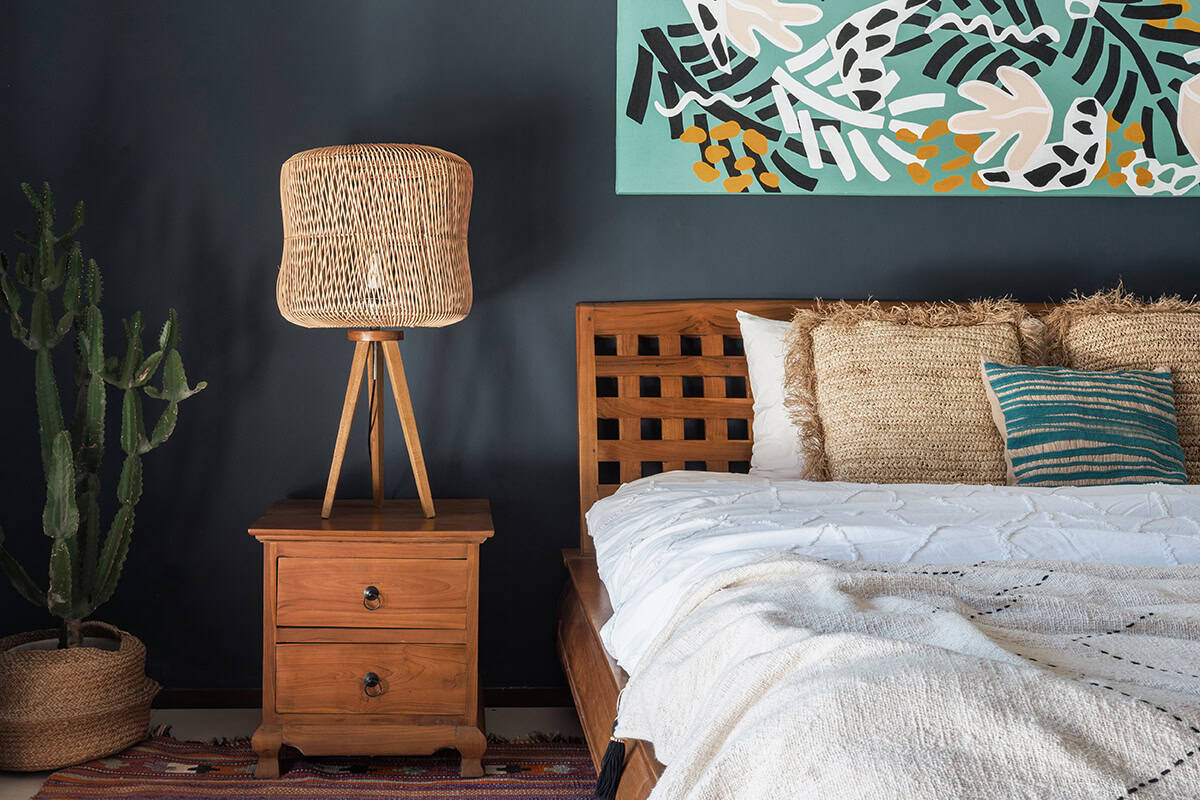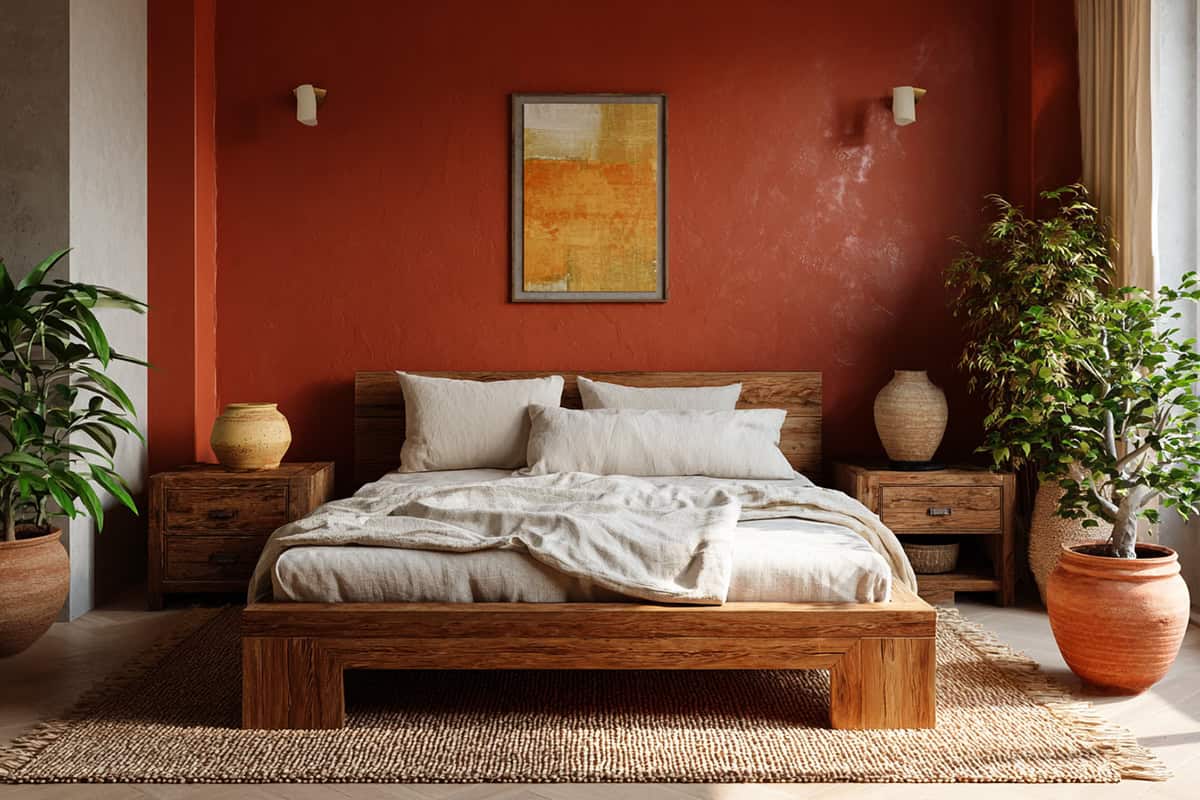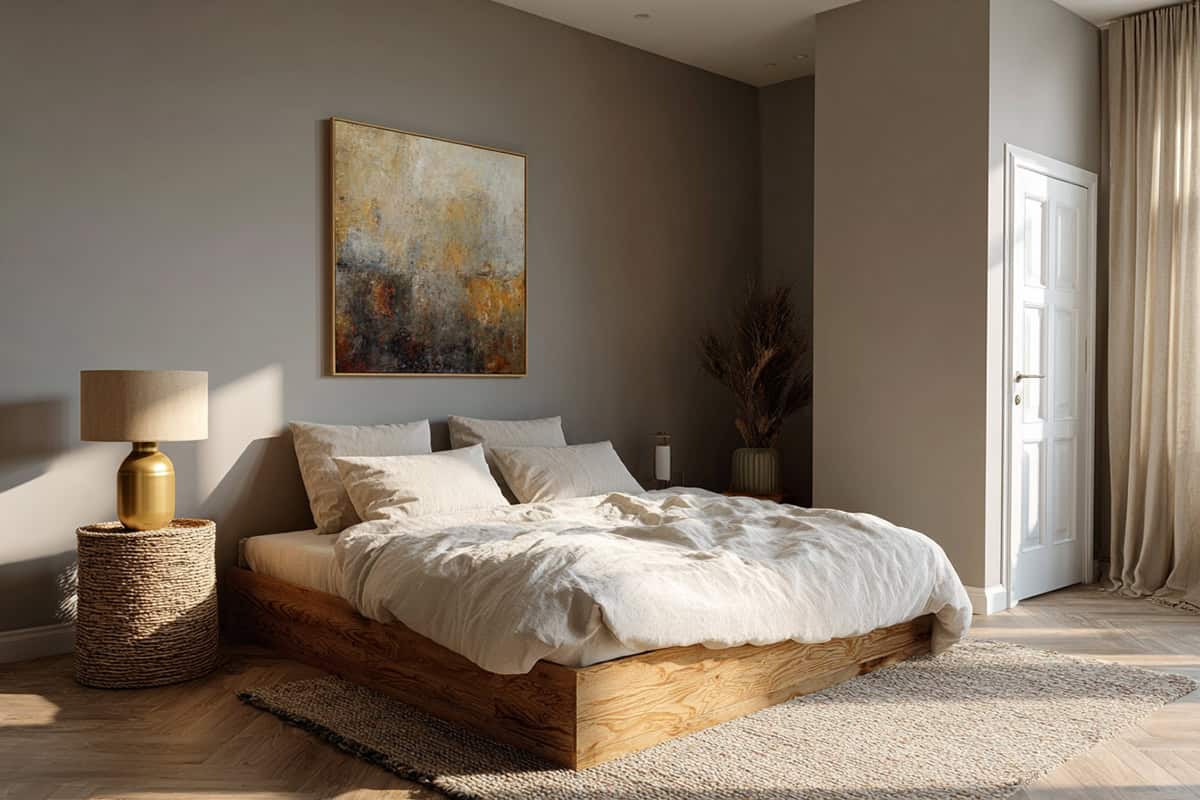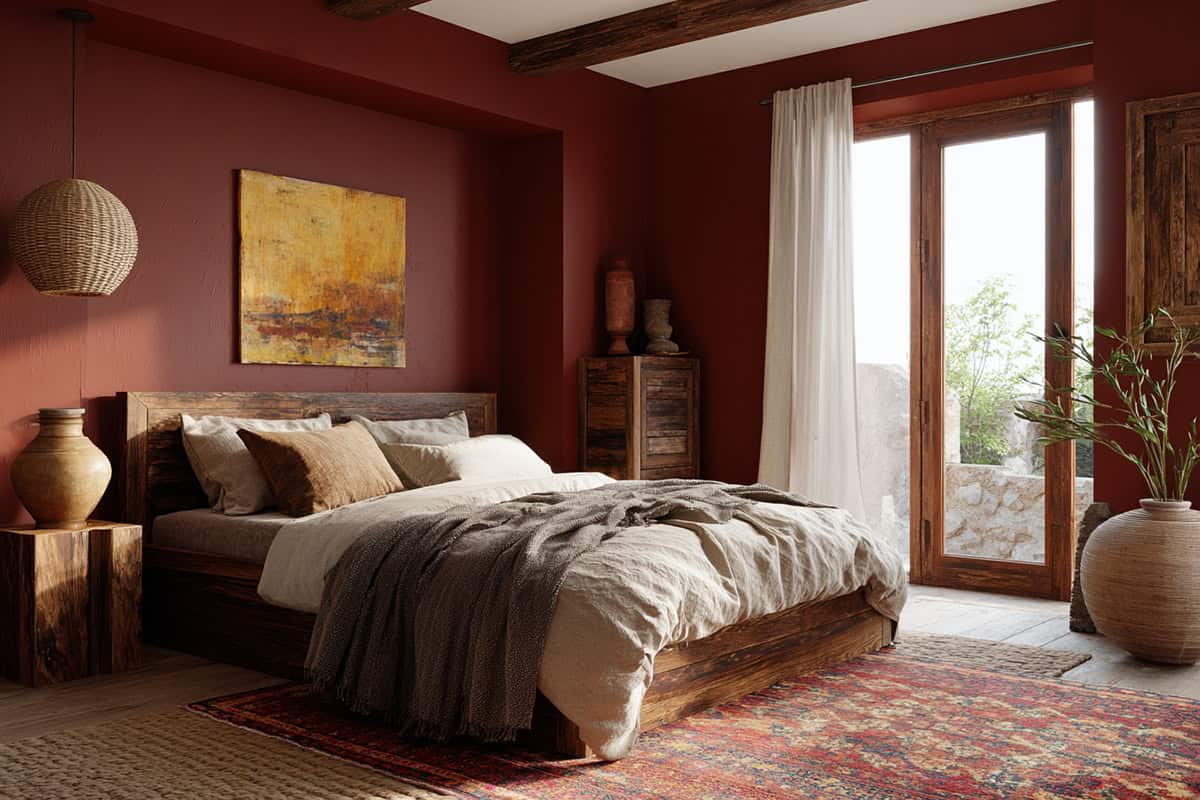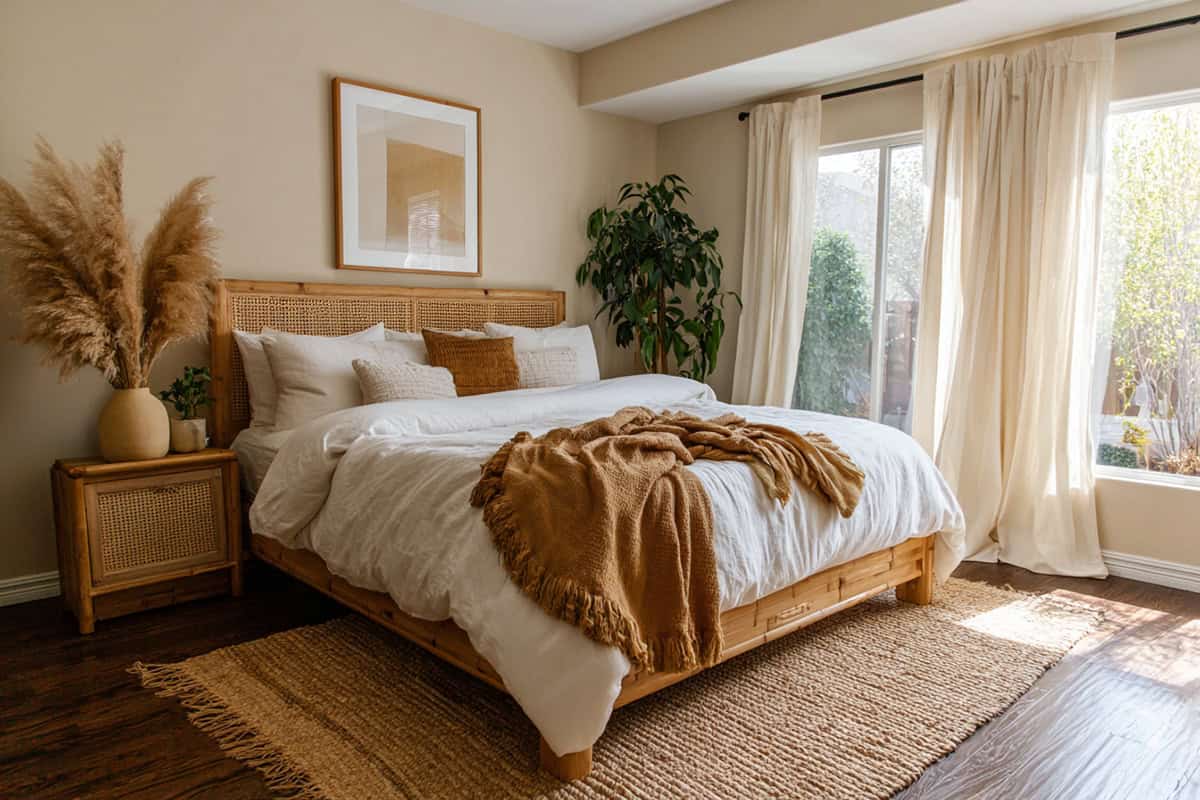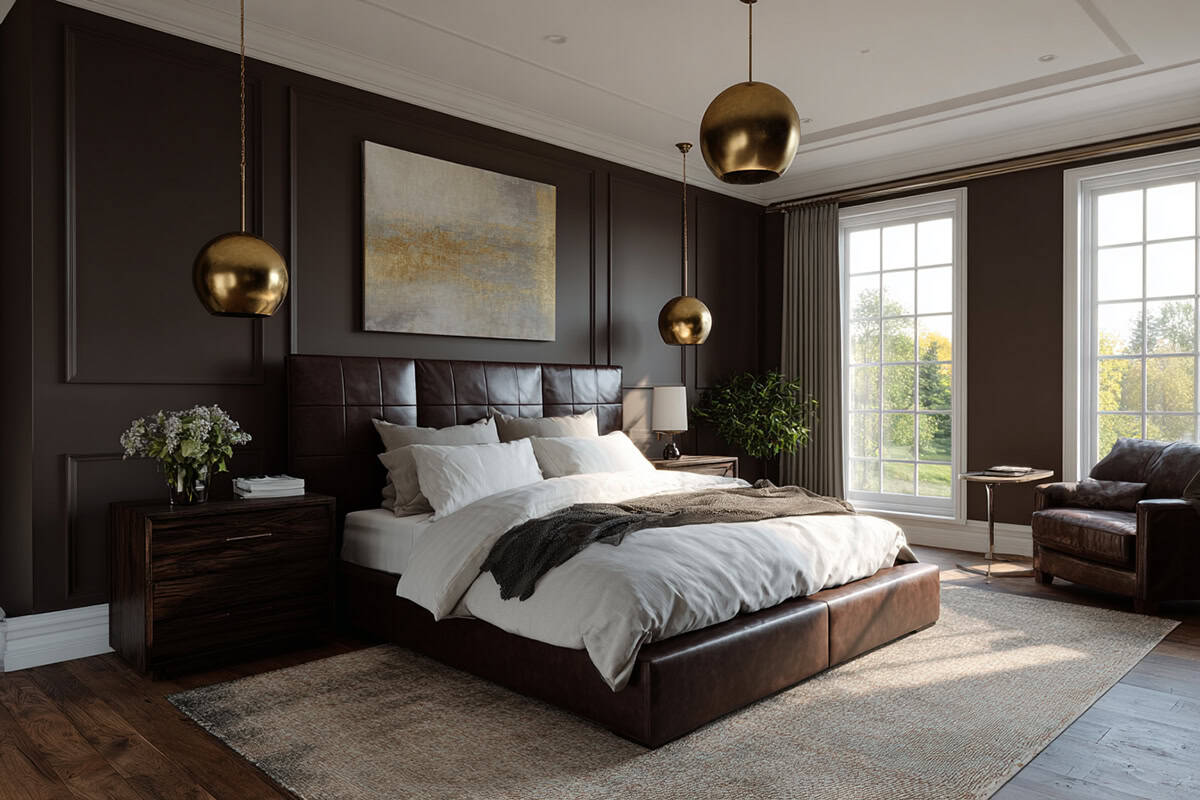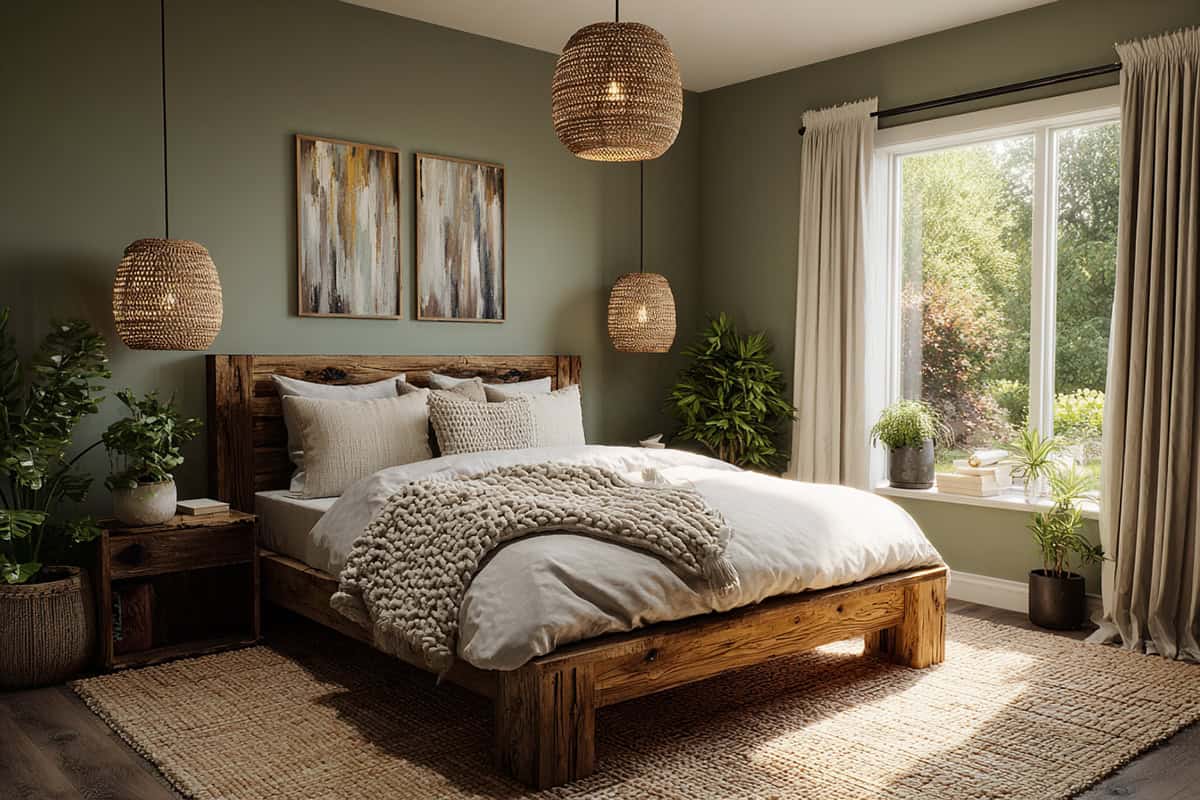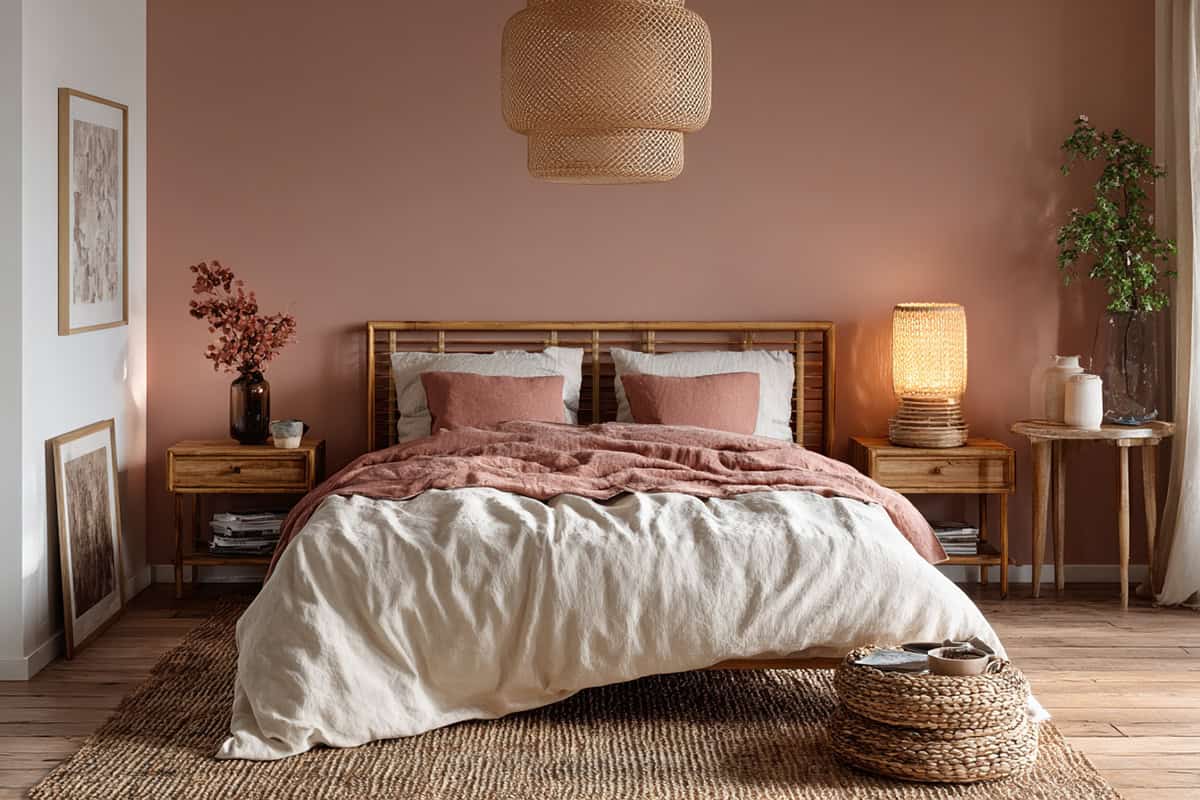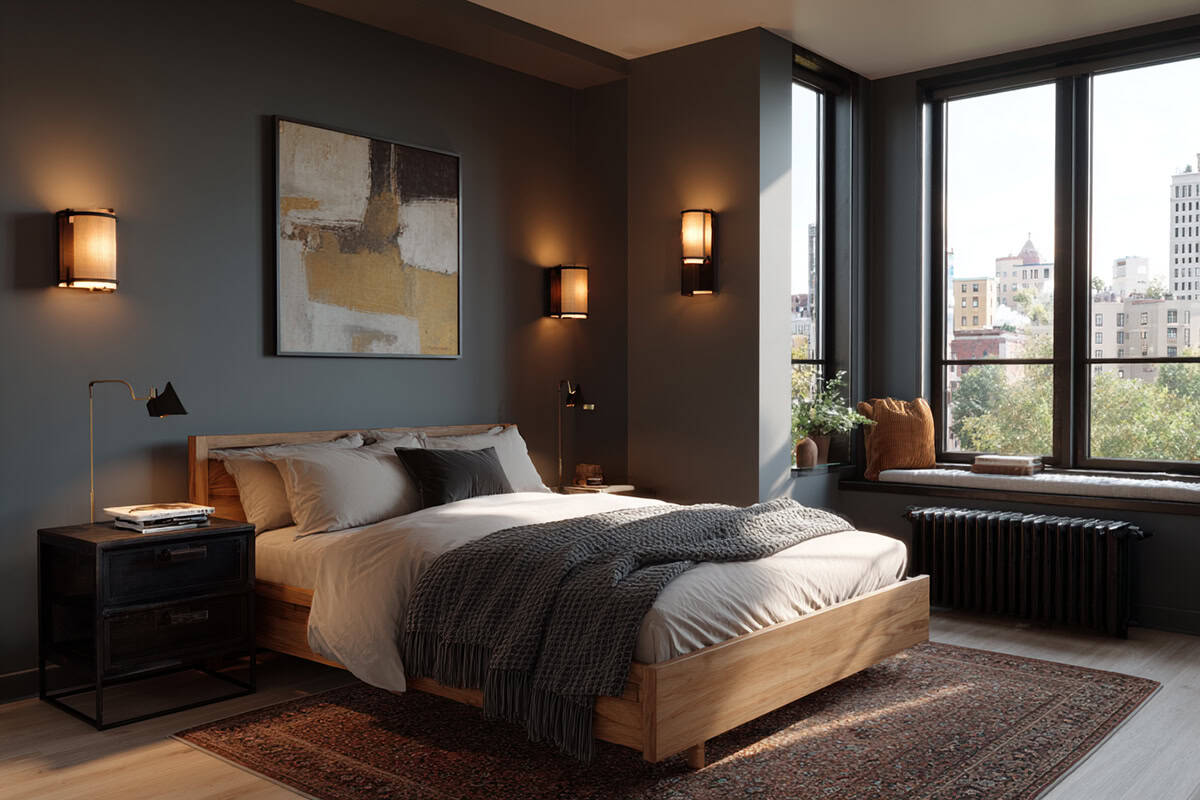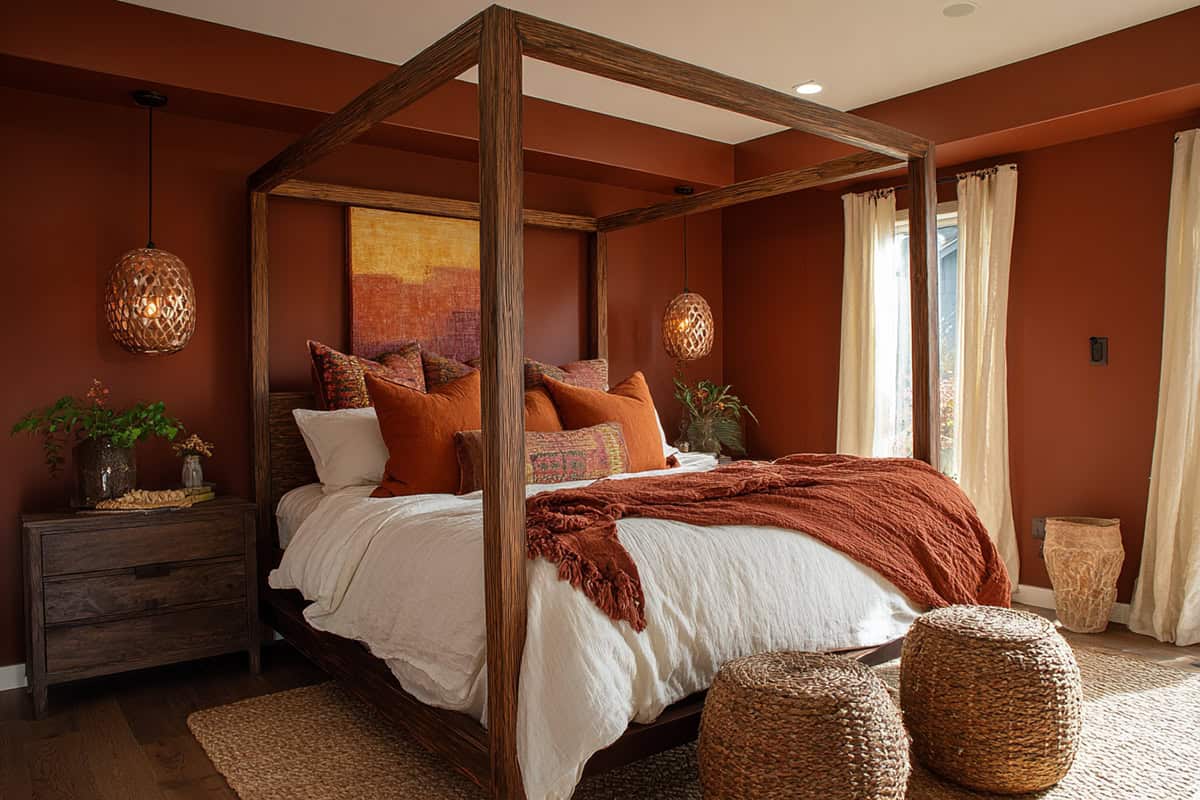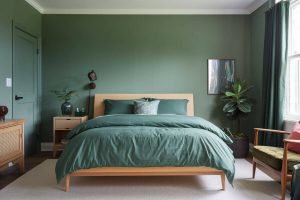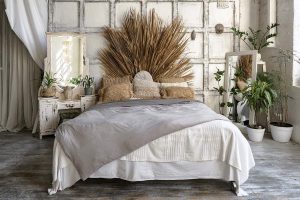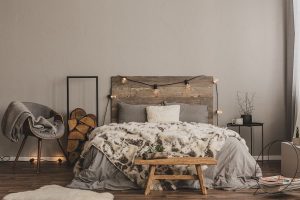There’s nothing like walking into a bedroom that feels calm and grounded. That’s exactly what earth tone paint colors can do — they bring warmth, comfort, and a natural vibe to your space. Here are 12 of the best colors & shades to try.
Best Earth Tone Paint Colors For The Bedroom
Natural hues bring a sense of grounded calm and warmth to bedroom spaces. Each earth tone provides a unique character and can help shape the mood, light, and feel in ways that complement many décor styles.
Warm Terracotta Clay
This earthy red-orange shade brings the look of sun-baked pottery to bedroom walls and adds warmth and depth that feel both rustic and modern.
Lighting often enhances the atmosphere terracotta delivers. This color pairs nicely with off-white bedding, cream accents, and natural wood furnishings. Textiles in mustard yellow or soft brown are a good match.
Deep terracotta shades have more drama, while lighter versions add a subtle glow. Whether applied on an accent wall or throughout, this shade rarely overwhelms a bedroom.
Olive Green Grove
Olive green conveys earthiness and a sense of balance. Its muted, yellow-based undertones add a sophisticated, restful feel great for bedrooms.
Walls in olive green bring the soothing colors of forest and nature inside. This hue promotes relaxation and pairs especially well with brass fixtures, woven baskets, and light beige fabrics.
You can use deeper olives to create a cocoon-like environment, while lighter olive shades open up the space. Both options work beautifully with indoor greenery and linen curtains. A pale olive suits small bedrooms, keeping them open yet grounded.
Clay Taupe Beige
If you want a neutral with a bit of warmth, clay taupe beige is a solid choice. This soft color bridges the gap between gray and brown, giving your bedroom an inviting, modern edge.
Taupe complements almost any accent color, from navy blue to blush pink. It makes white trim and black hardware stand out without drawing too much attention. You can layer in different textures and fabrics for added interest.
The calm simplicity of clay taupe beige makes it ideal for minimalist or Scandinavian-inspired bedrooms. This shade works equally well in both natural daylight and warm artificial lighting. It never feels sterile or cold.
Rustic Burnt Sienna
The mix of deep red and brown in burnt sienna gives bedrooms a bold, earthy character with a rustic edge.
The deep, rusty tones of burnt sienna pair well with natural fibers like linen and cotton. You might include woven baskets, tan leather or simple wooden frames to echo the color’s rustic charm.
If you want to avoid an overwhelming look, apply burnt sienna to an accent wall or use it in alcoves. This shade also looks inviting with terracotta planters and cream throws. It evokes the feeling of exposed brick or clay tiles, adding subtle depth.
Sandy Desert Beige
Inspired by natural stone and sand, sandy desert beige is a bright, warm option. This paint color is light enough for small rooms but still grounded, creating a calm backdrop for your furnishings.
Sandy beige blends especially well with whitewashed wood, jute rugs, and simple neutral linens. You can add visual interest using black frames or clear glass light fixtures. Soft blue or sage green textiles balance the look.
Thanks to its versatility, this shade fits with coastal, bohemian, or transitional bedroom designs. Desert beige reflects natural light and makes the room feel open and soft. It is not too yellow or pink, staying true to its earthy roots.
Deep Espresso Brown
For a touch of drama, deep espresso brown brings luxury and comfort. This rich brown shade absorbs light, creating a quiet, cocooned feel—perfect if you want a cozy retreat.
Espresso brown walls provide a beautiful backdrop for metallic accents like gold or copper. Cream, taupe, and ochre bedding lift the darkness without clashing. Add structural balance with textured pillows or a woven lampshade.
You could use espresso on just one wall, or throughout a larger bedroom for real impact. Layering with light-colored rugs and art helps prevent the space from looking too closed-in. The look is timeless and sophisticated without being cold.
Muted Moss Green
Inspired by forest tones, muted moss green provides a soft, natural green that feels soothing and grounded in bedrooms.
This soft green shade provides a beautiful contrast to warm wood floors or white ceilings. Moss green works well with linen shades and other muted earth tones. Off-white or sand highlights create balance and keep the look fresh.
Leveraging mossy greens in textiles further enhances the soothing atmosphere. The color does not distract, making it suitable for those who want calm rather than bold walls. Pairing with plants or natural woven baskets reinforces the outdoorsy feel.
Soft Clay Rose
For a touch of gentle color, soft clay rose offers a hint of earthy pink. It brings warmth and a comforting atmosphere without feeling overly bright or pastel.
This subdued blush works well with beiges, taupes, and other clay tones. You can combine it with woven or rattan accents for a relaxed, inviting space. Clay rose often appears elegant yet understated.
Use soft clay rose on all walls or just a feature wall. Crisp white trims sharpen the effect. Bronze or leather accessories enhance the warmth. The shade suits both minimalist and cozy bedroom setups, adapting easily to underlying styles.
Golden Ochre
Drawn from weathered soils and sunlit clay, golden ochre adds cheerful depth with a warm, natural yellow-brown finish.
It complements earthy accent pieces, deep green plants, or distressed wooden furniture. Golden ochre pairs well with light gray and white, as well as navy, for sharp visual contrast.
Choosing this color can make your bedroom brighter and feel welcoming year-round. Gold or brass lighting fixtures underline the ochre’s glow at night. It’s an energetic way to bring a cozy, natural element indoors.
Charcoal Earth Gray
Charcoal earth gray blends deep charcoal with a subtle brown undertone, giving an organic, sophisticated look. You can use this color to ground a large bedroom and add depth without harshness.
The nearly-black shade helps accents in lighter colors stand out, including ivory, pale taupe, or metallics. Upholstered headboards, velvet cushions, and framed black-and-white photography complement charcoal gray walls beautifully.
Lighting plays a big role with this color, so soft lamps or warm-toned bulbs help maintain bedroom comfort. If you have light floors or bedding, charcoal gray highlights architectural features and provides a strong, modern base.
Warm Sandstone Beige
This beige with soft yellow-orange undertones creates a warm, versatile base that keeps bedrooms open and welcoming.
This paint pairs well with crisp white or soft gray. You can add warmth through honey-toned wood, tan leather, or jute baskets. The shade balances with both cool and warm accent colors.
Subtle but character-filled, warm sandstone beige fits traditional and modern décor. A soft glow in the morning or evening light keeps the space feeling fresh and open. The effect is subtle enough for ceiling paint as well.
Cinnamon Brown Spice
There’s something about cinnamon brown spice paint color—it puts a twist on the usual browns, with red and orange undertones sneaking in for extra depth. It’s got that grounded, earthy vibe but with a bit more spark.
This shade pairs up nicely with beige, gold, or cream. Toss in some woven pillows, a patterned throw, maybe a few wood accents, and suddenly the space feels layered and interesting. The color itself lifts a room, cozy but not dull, with just enough drama to keep things lively.
Cinnamon brown works for accent walls or even all four if you’ve got the space. It manages light and mood in a way that’s surprisingly sophisticated—warm and inviting, but never heavy. Honestly, it just feels right year-round.
